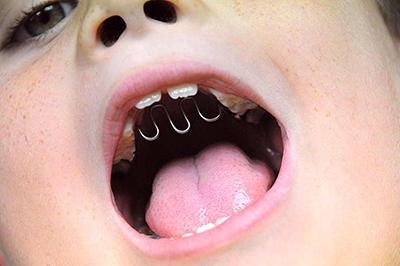
Source: www.brightsidedental.com
Thumb sucking is a natural habit in young children that may develop in utero (in the womb). This is a normal process of child development whereby a baby first develops sucking reflex instinctively when any object is placed in the mouth; this reflex is responsible for feeding. As the time goes, a child may find thumb sucking relaxing and provides warmth, security and a sense of fulfilment. According to Sigmund Freud, a child below one year old indulges in sucking object placed in his mouth as a form of exploration and personality development.
Some children suck on their thumbs, some suck other digits while others indulge in sucking pacifiers. But the concern regarding the effects of this action remains the same if this habit extends beyond 5-6 years of age. Generally speaking, the effects of thumb sucking will not be permanent if a particular child performs this habit during the deciduous dentition stage (where all the teeth present in the mouth are milk or primary teeth which are to be gradually replaced by permanent teeth at a later stage).
Why do some children perform this habit?
- Initially, sucking reflex is mainly used for feeding but later the child learns to derive pleasure from it, therefore they perform the habit to get a sense of fulfilment.
- Since thumb sucking is relaxing for children, they use it to give them comfort and a sense of security in an unfamiliar surrounding such as when meeting new people or separated from their parents.
- Thumb sucking may help to induce sleep in some children as they find this habit relaxing and familiar; similar to why some children need a particular blanket or pillow (so-called ‘bantal busuk’) to help them sleep.
What problems can it cause?
The deleterious effects of thumb sucking depend on the frequency, duration and intensity of the habit. Intense, high pressure sucking for a short period of time may cause minimal derangement as opposed to mild, continuous pressure of a digit being placed into the mouth, such as overnight during sleep. Studies suggest that it only takes light forces to move teeth, if the forces are applied for an extended period of time. It is thought that the threshold period is about 6 hours. So if a thumb is lightly kept in the mouth resting on the teeth while a child is asleep at night, enough derangement may occur as a result of this chronic habit.
- Occlusion is loosely defined as the relationship between the upper and lower teeth when they come in contact or bite together. In a normal occlusion, upper front teeth overlap the lower front teeth by about 2-4mm so that the lower front teeth are only partially visible. However, in case of chronic thumb sucking, the thumb exerts continuous pressure on the teeth, causing the upper and lower front teeth to be separated. At this stage, you may notice that the child has a slight lisp, as the ability to pronounce certain consonance such as ‘s’ and ‘f’ is compromised.
- Depending on the way the thumb is placed, the upper front teeth may be either placed more forward or more backward than their normal position.
- The pressure exerted by the cheek on the jaws during prolonged sucking can cause the jaws to constrict. When the jaws become narrower, there will be crowding and misalignment of the teeth, which is not aesthetically pleasing and may affect a child’s confidence growing up.

Source: http://askanorthodontist.com
How do we stop the habit?
- Gentle encouragement works best. For instance, praise your child for not sucking his or her thumb instead of praising him or her when he does so.
- Positive reinforcement. Offer rewards such as toys, his favourite meals or a trip to the zoo but avoid sugary treats.
- Children above 6 or 7 years old may be able to understand the effects of thumb sucking on their teeth and appearance. The “cold turkey” method may work if the child is internally motivated to quit the habit. For starters, set targets such no sucking when watching the tv or no sucking when outside, and then gradually increase the aim. There may be a few moments of discomfort so positive rewards may help to discourage the habit for good.
- Aids may be used to act as a reminder such as bitter-tasting nail coating, bandaging the thumb or making the child wear gloves at night before sleeping.
- Oral appliances. A fixed or removable tongue crib appliance consisting of a metal grid placed behind your upper front teeth may be fitted in by your dentist to act as a physical deterrent to thumb sucking. However, this should be considered only as a last resort and only in teenagers or older children who wish the habit but need a reminder.
In conclusion, parents and dentists should work together at detecting malocclusion caused by thumb sucking and deciding when the necessary intervention is appropriate. There are various ways to discourage this habit but ultimately, it is all about finding the right one for your children and trying to minimise the effects of thumb sucking in the dentition.
Dr. Husna Razak (BDS) (KLE VK) is a dental officer working in the Oral and Maxillofacial Surgery Department in Kota Bharu. Know more about her in The Team page.
[This article belongs to The Malaysian Medical Gazette. Any republication (online or offline) without written permission from The Malaysian Medical Gazette is prohibited.]
References:
- http://www.jisppd.com/article.asp?issn=0970-4388;year=2008;volume=26;issue=7;spage=114;epage=117;aulast=Singh
- http://www.orthodontists.org.nz/common-orthodontic-issues?id=48
- http://www.ada.org/sectionscienceAndResearch/pdfs/patient_77.pdf
